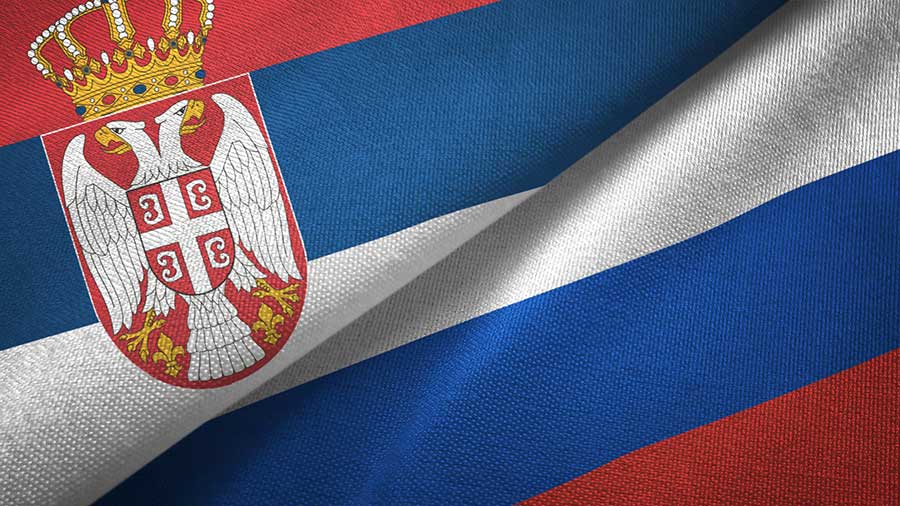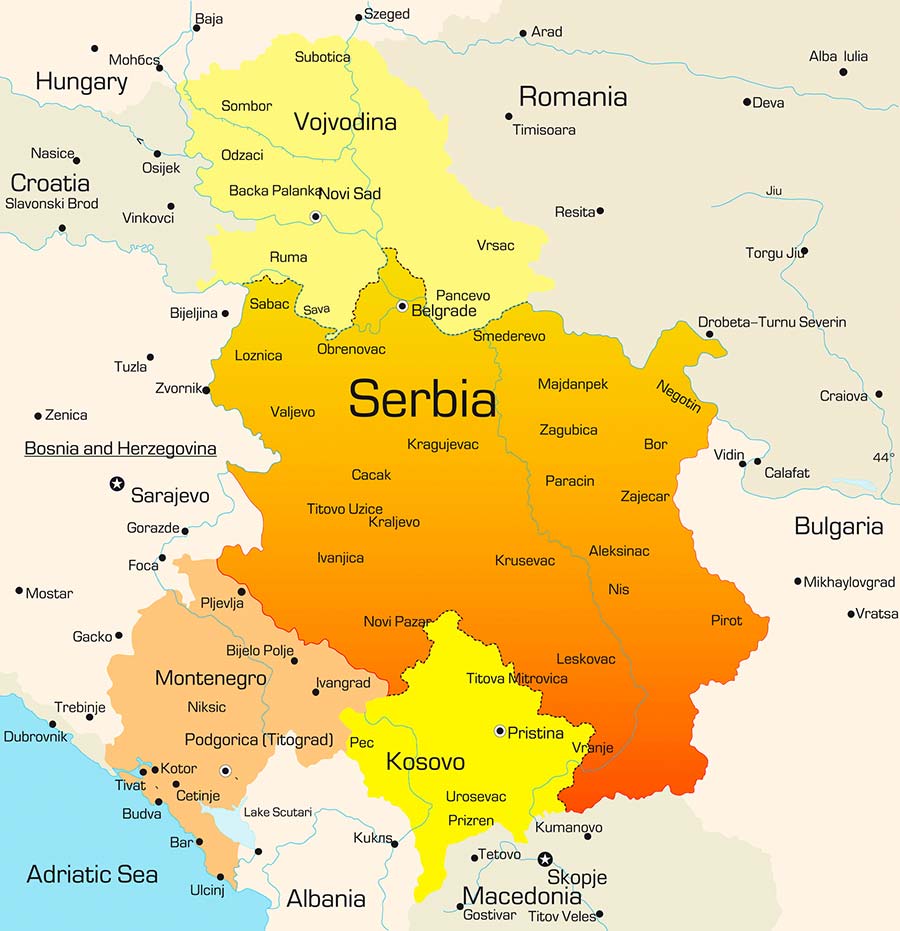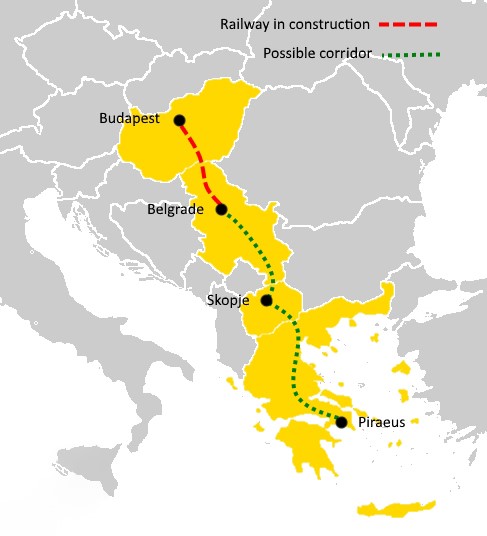Serbia – EAEU Free Trade Agreement Now In Effect

Serbia is an important Belt and Road transit through to Eastern European markets and a strategic piece in the on-going Moscow-Brussels-Beijing struggles for control of the Balkans
Serbia’s free trade agreement with the Eurasian Economic Union came into effect on July 10 and has already increased its trade with Russia by 7% over the past year in anticipation of this. Other EAEU members include Armenia, Belarus, Kazakstan and Kyrgyzstan. Landlocked Serbia is the only European country thus far to have an EAEU FTA and is also a member of China’s Belt & Road Initiative, with Beijing financing several infrastructure projects due to connect the country to coastal ports in Montenegro. Serbia includes the autonomous region of Vojvodina, however, considers Kosovo a breakaway republic although it accepts governing authority of the Kosovo institutions as a part of a 2013 Agreement.

Serbia’s position within the Balkans places the country and its friendly relations with both Russia and China at odds with the European Union, with whom it shares borders with Bulgaria, Croatia, Hungary, and Romania. Serbia’s other neighbors, Albania, Bosnia & Herzegovina, Montenegro, and North Macedonia are candidate states for EU membership, resulting in regional political issues as the region wrestles with benefits and tensions created between the EU and Russia.
Serbia needs improved port access to the Adriatic Sea which would provide it with far better import-export options, an idea supported by Italy, also a BRI member. The country has faced problems concerning this, as the Serbia-Montenegro highway linking Belgrade to Bars has hit financial difficulties at the Montenegrin side, with the country unable to repay Beijing for loans made to help develop the route. Construction has been delayed due to covid and expected transport income streams have consequently not materialized. Beijing has deferred loans until 2022, while Montenegro has been passing around a hat to the EU to contribute in a test to see how far Brussels will be pressured. Last week, one French and two United States banks have agreed to lend Montenegro the money.
Other connections to the EU and most notably the high-speed rail between Budapest in Hungary and Belgrade have faced Brussels resistance as much of this was Chinese funded – the EU insisting that as an EU member, Hungary must follow EU bidding protocols, a decision that infuriated both capitals, and has led to increasing frictions concerning perceived sovereign interference between Budapest and Brussels. This is part of a US$2.89 billion, 350 km high-speed rail line project, and the first stage, of a 1,360km planned dual line railway that will continue through to Skopje, the capital of North Macedonia, and south to Greece’s Thessaloniki and Piraeus Ports – the latter one of Europe’s largest seaports, operated by Chinese investors. The Serbian sections are currently being built by China’s China Railway Corp and Russia’s RZD International, with both Beijing and Moscow financing the build. Delays caused by Brussels objections and covid have pushed the completion of the Budapest-Belgrade route back to 2024.

The complete Budapest-Athens route is a direct competitor to the EU’s own planned Pan-European Corridor X, which is a single line and slightly shorter route, and will almost certainly raise its head again as part of the EU’s very recently announced ‘Globally Connected Europe‘ infrastructure projects, and is therefore a source of friction between Brussels and Beijing.
Serbia meanwhile has been talking up the benefits of a free trade deal with the Eurasian Economic Union as Belgrade was able to conclude an agreement in far less time and with far less economic restructuring than would have been possible under the EU’s far more stringent requirements, a lesson that will not have been lost on Albania, Bosnia & Herzegovina, Montenegro, or North Macedonia, and one that again pits Brussels against Moscow.
Serbian Innovation and Technological Development Minister Nenad Popovic, head of the intergovernmental committee for cooperation with Russia, said on July 10 that “It is a historic moment for Serbia. As a result of our excellent political relations, new prospects for the development of our economic ties have opened, which is of crucial importance for our state, economy and citizens. With this agreement coming into effect, Serbia’s economy will be able to export almost all the goods produced in the markets of the Eurasian Economic Union, which has about 200 million people, without trade duties,” Popovic said adding that “it is an exclusive advantage compared to all the other countries in Europe and the world.”
Serbia mainly exports metals (steel, copper), high technology, machinery and equipment, agricultural products, foodstuffs, petrochemicals, electricity, and medicines to other countries and will be targeting a positive outcome from the EAEU FTA. Russia and China will also be wanting to ensure the FTA is a success and that the Serbian economy booms as it is in both their interests to have Serbia’s coastal neighbors and North Macedonia join the EAEU rather than the EU.
Under President Aleksander Vucic, Serbia has sought closer cooperation with China. Following meetings with Chinese Foreign Minister Wang Yi, he secured Chinese help in combating Covid-19 in Serbia through delivery of PPE and CoronaVac doses, which has contributed to Serbia having some of the highest Covid vaccination rates in Europe. China has invested about US$10 billion in Serbian infrastructure and energy projects, while China’s Hesteel Group recently took over the struggling Smederevo Steel Plant, keeping 5,000 people employed.
This on-going struggle for control of the Balkan States is therefore placing Serbia as a sought-after and highly valued client state of both Russia and China, with the national economy set to boom. Serbia’s neighbors, with negotiations with the European Union dating back 18 years, will be looking with decisive eyes at whether the Brussels or Eastern options are preferable. A huge political battle of wills is already well underway.
Related Reading
- China Moves in on Balkans after EU Promotes “Connectivity” rather than Membership
- The Case for Leaving the EU and Joining the Eurasian Economic Union
- Decisions Loom For Moldova In Turning East Or West
About Us
Silk Road Briefing is written by Dezan Shira & Associates. The firm has 28 offices throughout Asia, and assists foreign investors into the region. For strategic advisory and business intelligence issues please contact the firm at silkroad@dezshira.com or visit www.dezshira.com





